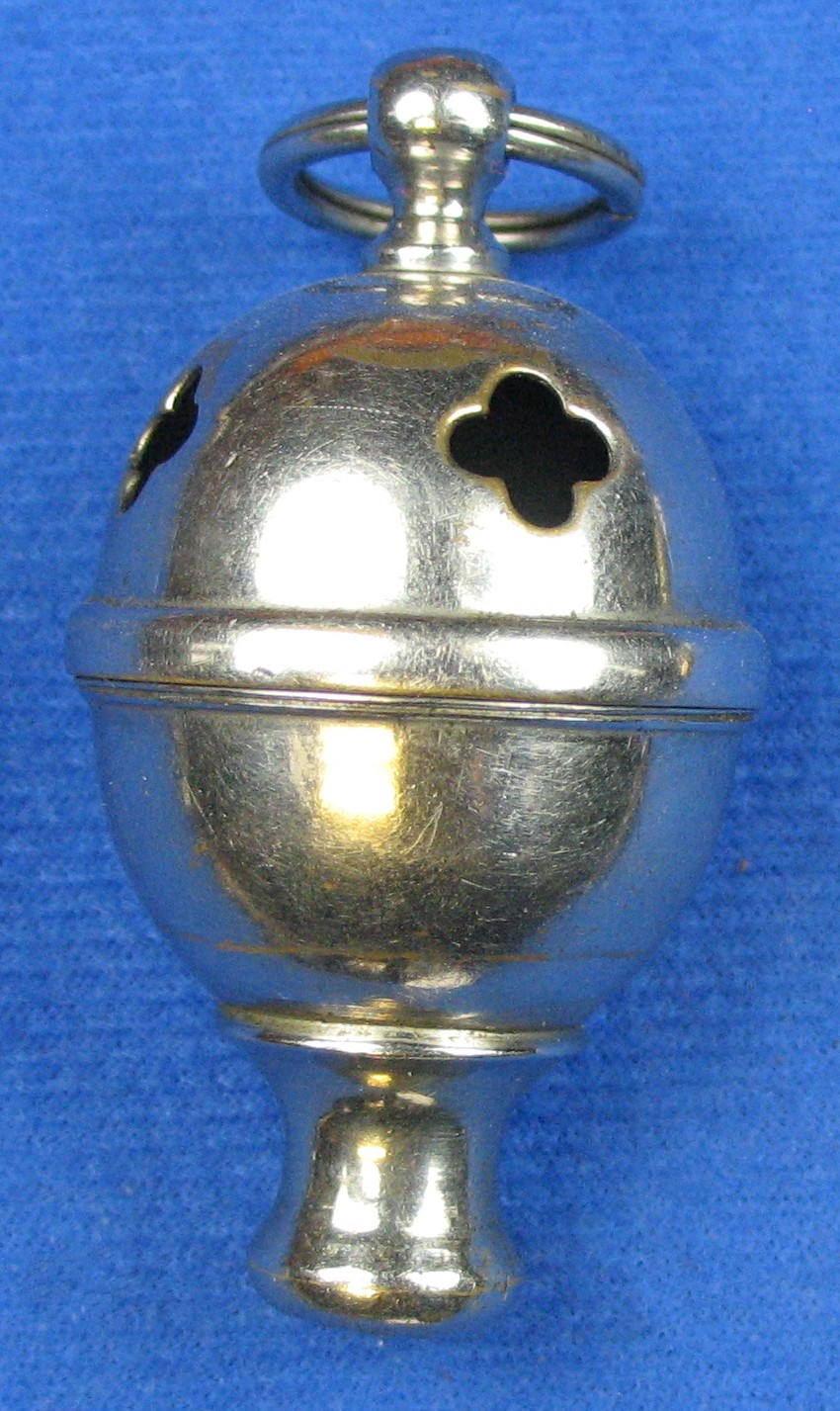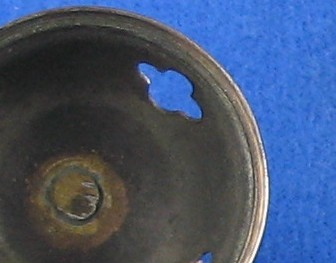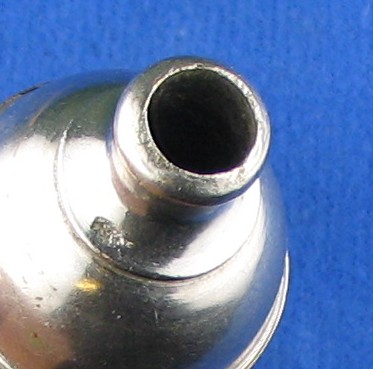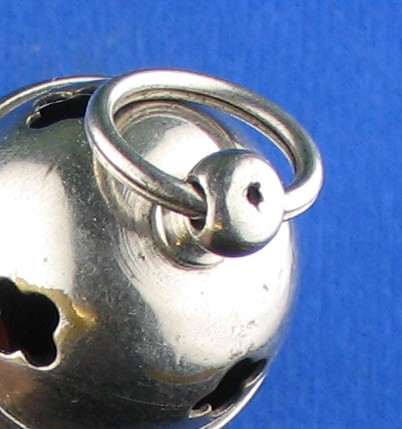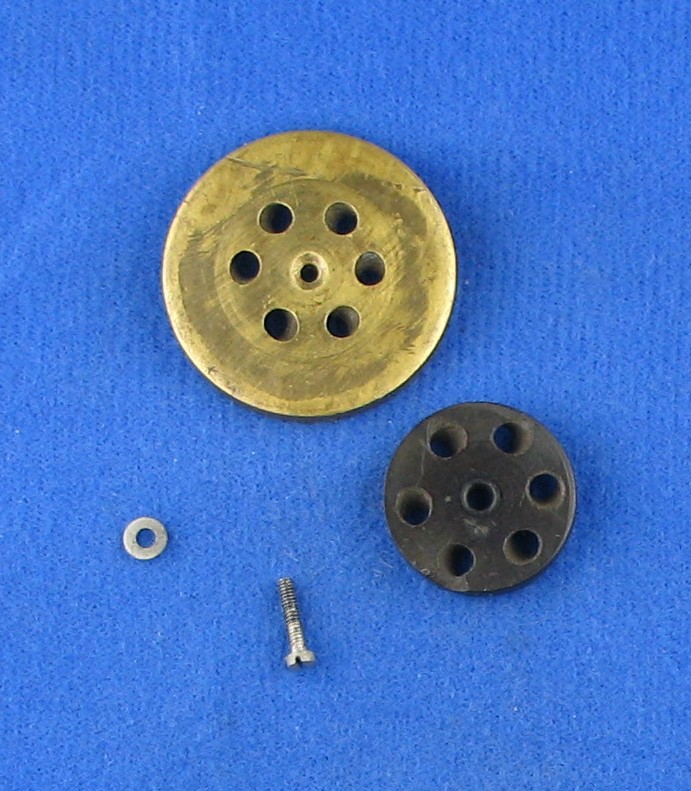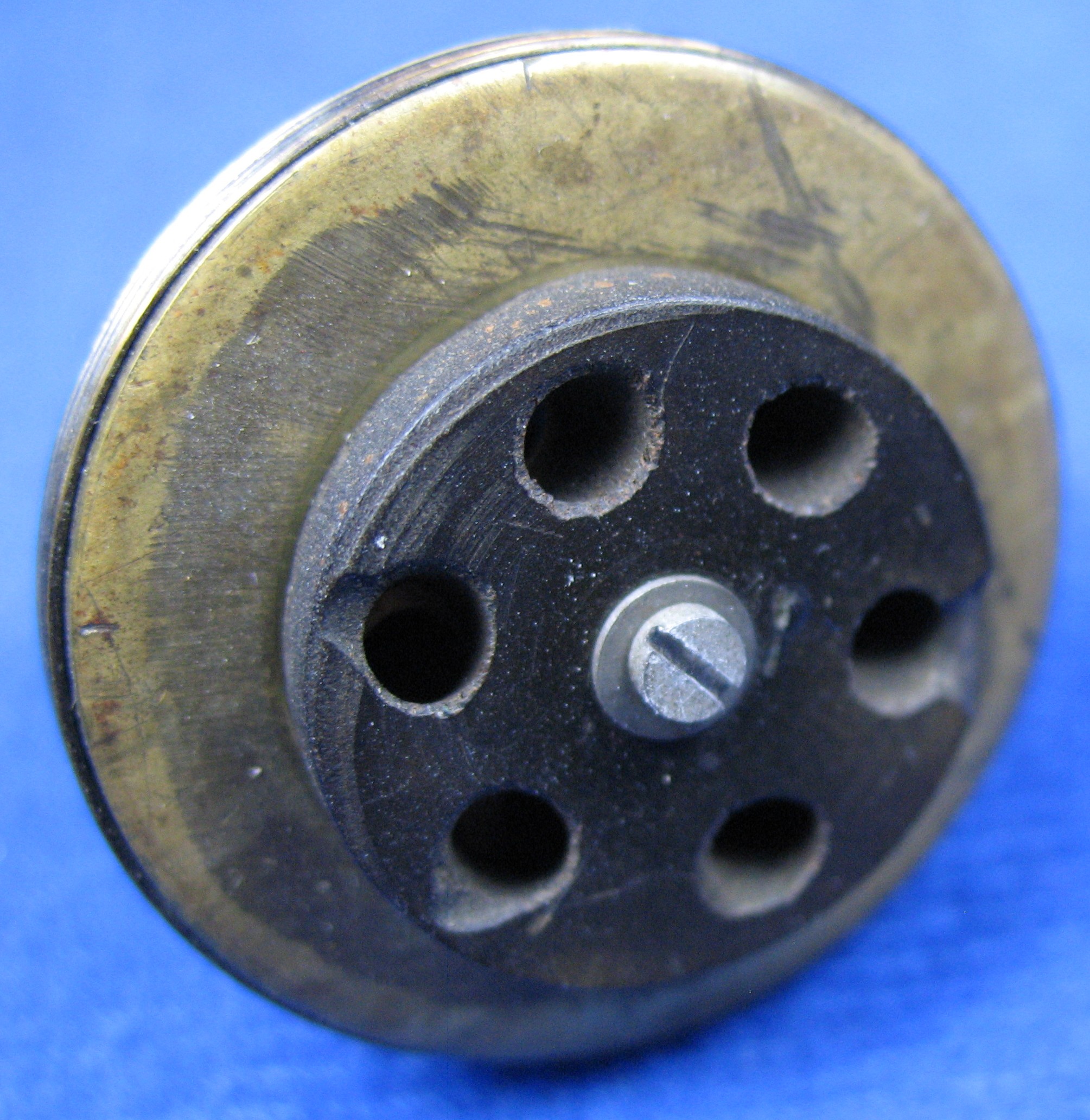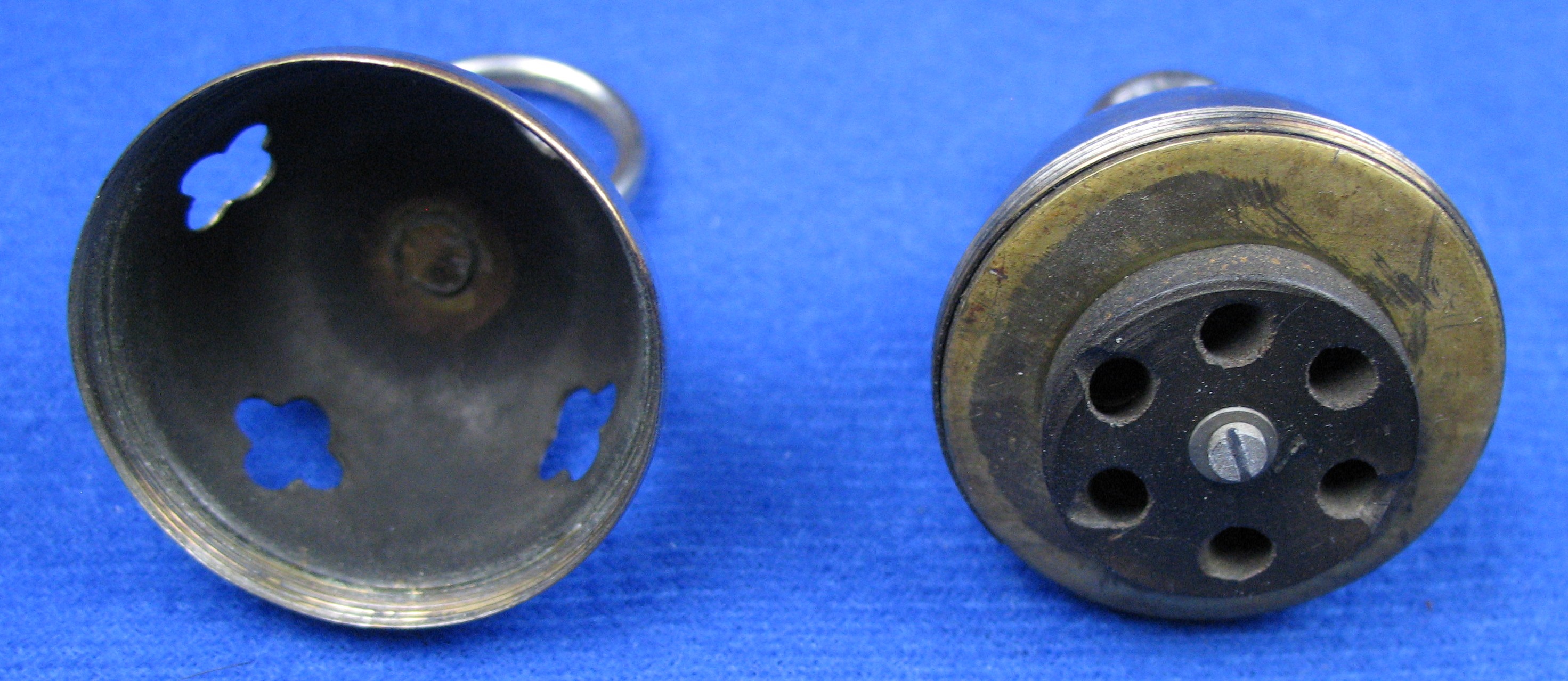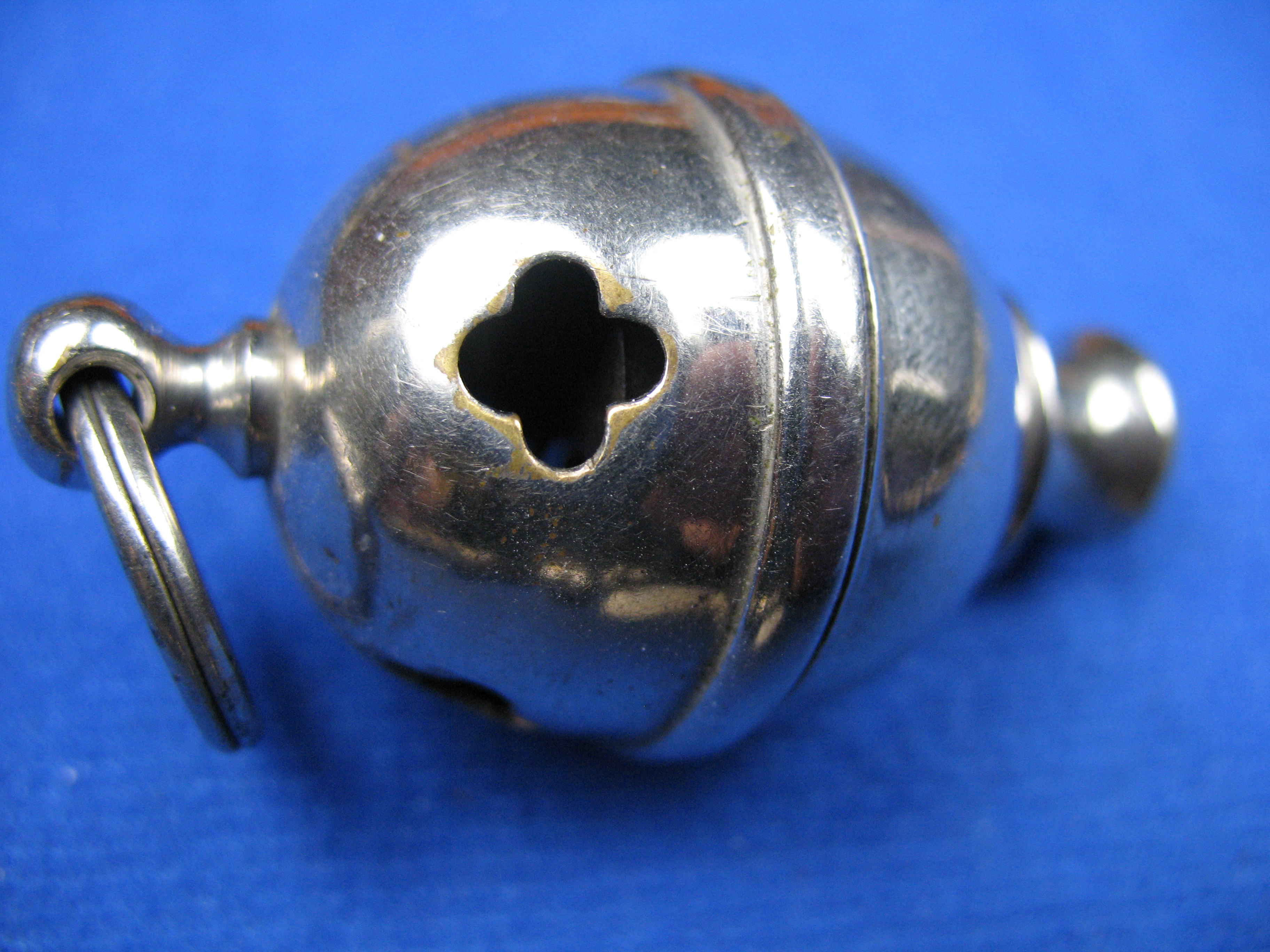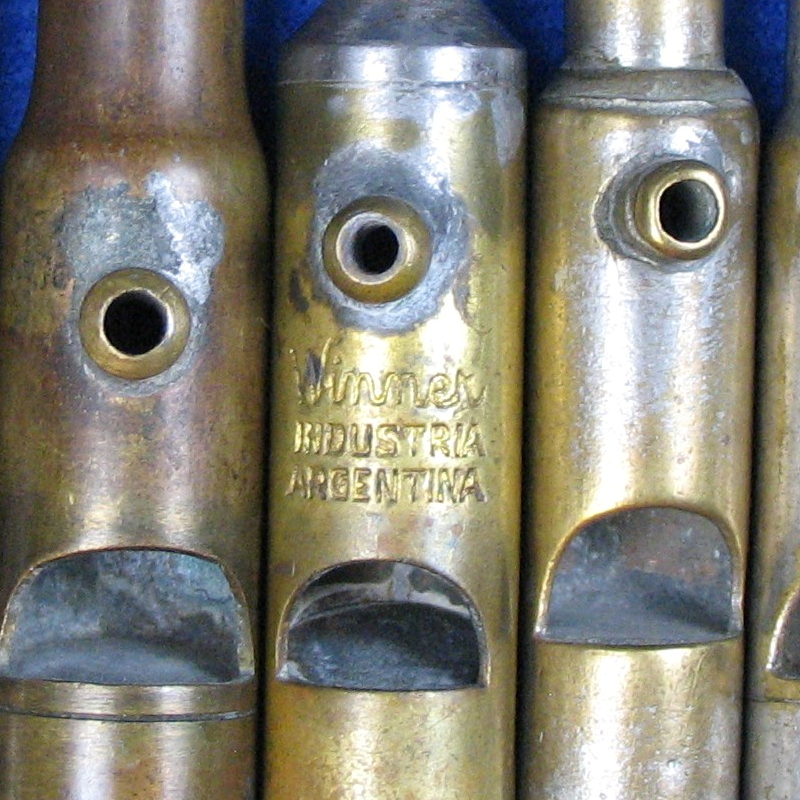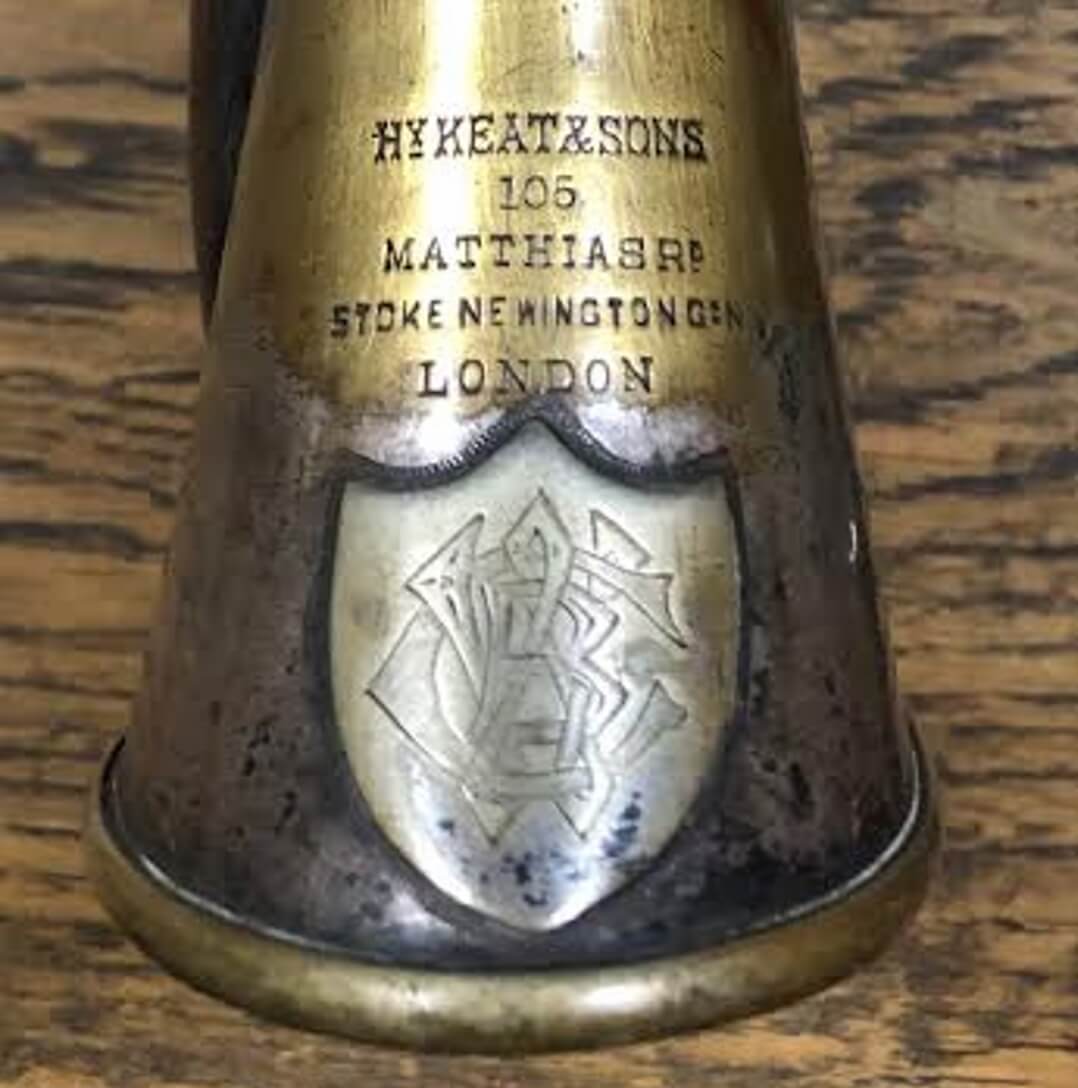Spotlight > Specific Manufacturer > United Kingdom > Lilly > 063
Records indicate that B. Lilly was founded as a high quality brass founder in 1861 at 73 Brearley St. Birmingham UK.
They eventually expanded to became a wholesaler and also a manufacturer of fine whistles and sirens. It is noted in CPWs ( Gilchrist ) that model numbers from several whistles ( see page 77 side bar notes ) are referred to from at least a 1909 catalog by B. Lilly.
The only reference we find for this Lilly siren is the group picture inside the front cover of More Whistles by Martyn Gilchrist 2005. This is the actual siren pictured. It is merely described as B. Lilly and Sons, 1910s siren. We hope to obtain a catalog one day and publish the model number. In the meantime TWG presents here for study what we will call TYPE A, based on this reference to Lilly’s siren.
Dating this siren is at least from 1909. The shape is quite unique. It is built to take apart and clean and adjust like contemporary cases of the time. Noticeably the vents are cross shaped windows. The round shape is complimented by the mouthpiece.
Interestingly the mouthpiece is cast, indicating earlier production than 1909. The knop is typical looking for C. 1900. However it too may be cast. There is a top hole instead of a machined tip ( or pip ), the attachment protruding down through the top and is ground off.
The case and parts are nickel plated brass. Internally a heavy brass plate was used for the wheel base. It is a simple concept and likely not able to take much use as in the Hudson cased sirens to follow. However for looks it is a beautiful siren example.
Further dating the siren closer to the 1900 time period is the hard rubber wheel. We remember that Hudson patented their mechanism with a hard rubber wheel about 1907. The difference here is that the Lilly is a bit crude in wheel design. The top is adjustable by a single bolt only, into the brass wheel. Thereafter it is merely protruding through the larger brass wheel – no adjustment on the flip side.
There is no adjustment on the other side as in the Hudson design. However Lilly would go on to use a half measure in its next model with a top arch. Hudson would complete the design with an adjustable bottom and half arch with an adjustment on top.
The vents on case sirens are centered around the top of the case and mostly functional. On the Lilly model(s) the vents ( four ) are not only functional, but decorative. Each of four is a cross shape and half way up the top piece.
The B. Lilly siren is an obscure and beautiful model, being quite rare. It would appear to predate the Hudson patented mechanism, being somewhat crude in design and even making an improvement along the way towards Hudson’s patent date of 1907.
We would therefor date it circa 1900. This one is from the Gilchrist collection and very few have been seen. [ Of Note: To set the record straight a correction about the Lilly siren that it was bought privately from Martin Gilchrist for 528 dollars Oct 28th 2007. This has been stated incorrectly elsewhere on the net for a fraction of what it was bought for. (June 23, 2018) ] It was a production siren though if it was in the 1909 catalog by B. Lilly, so that it could be identified by Gilchrist. Who manufactured it ?? At this time we would say it probably was Lilly themselves. They manufactured whistles, handcuffs and other brass furniture metal items ( corners etc. ) and surely would have had the ability.
We will add to the article as knowledge becomes available.
– TWG
Posted October 5, 2016
